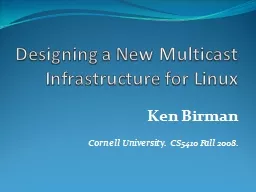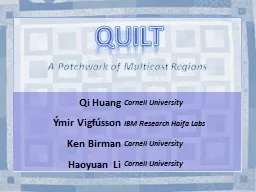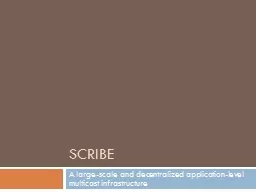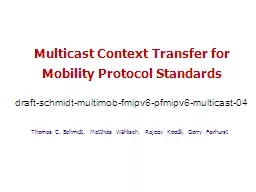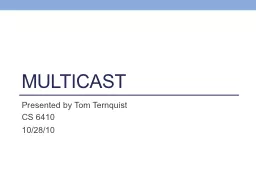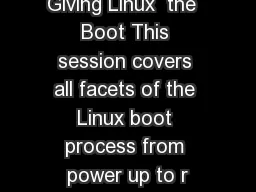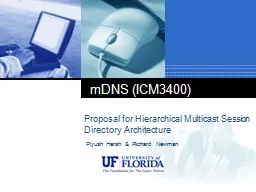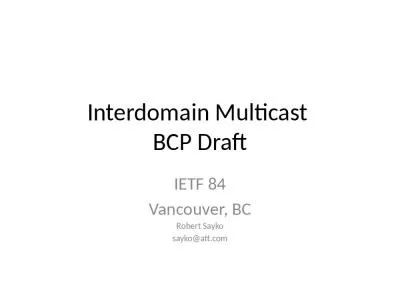PPT-Designing a New Multicast Infrastructure for Linux
Author : cheryl-pisano | Published Date : 2017-07-07
Ken Birman Cornell University CS5410 Fall 2008 Mission Impossible Today multicast is persona nongrata in most cloud settings Amazons stories of their experience
Presentation Embed Code
Download Presentation
Download Presentation The PPT/PDF document "Designing a New Multicast Infrastructure..." is the property of its rightful owner. Permission is granted to download and print the materials on this website for personal, non-commercial use only, and to display it on your personal computer provided you do not modify the materials and that you retain all copyright notices contained in the materials. By downloading content from our website, you accept the terms of this agreement.
Designing a New Multicast Infrastructure for Linux: Transcript
Download Rules Of Document
"Designing a New Multicast Infrastructure for Linux"The content belongs to its owner. You may download and print it for personal use, without modification, and keep all copyright notices. By downloading, you agree to these terms.
Related Documents

